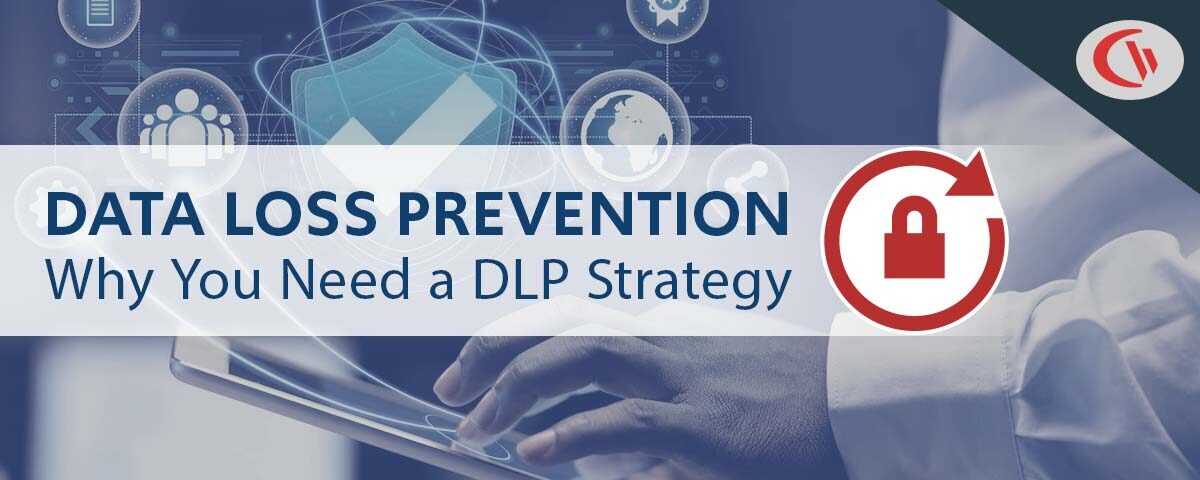Why Your Business Needs a Data Loss Prevention Strategy

Being a business leader in today’s business environment is no walk in the park. With over 2,200 cybersecurity attacks occurring daily, the task of protecting valuable business data adds an extra layer of complexity to your plate. How do you safeguard your crucial data, ensuring it’s not lost or compromised?
You need a comprehensive Data Loss Prevention (DLP) strategy fortified by the best IT security software. This potent combination protects your data from leaks or theft and enables your business to operate smoothly and securely. This article will guide you through understanding the importance of a DLP strategy and how IT security software can turn the tide in your favor.
FREE GUIDE & CHECKLIST
How to Keep Data Safe When Offboarding Employees
The employee offboarding process presents significant data security risks. Employees have intimate access to corporate data, insider knowledge of the organization’s systems, and a level of trust that can allow them to steal data undetected.
Click the button below to learn the best practices for managing insider threat risks during offboarding & gain access to a checklist of key cybersecurity items you must include in your offboarding process.
The Consequences of Data Loss
Considering the sheer volume of data generated daily, your company’s digital data can become a double-edged sword. It can offer substantial potential for growth and present a significant risk.
Data loss can occur in many ways— unintentional deletion, hardware or system malfunctions, insider data theft, software corruption, and cyberattacks are all common culprits. No matter the cause, the consequences of data loss are significant and can have far-reaching impacts on a business.
Here are a few consequences that underline the dire need for an effective data loss prevention strategy:
- Financial Loss. Data breaches and loss can lead to substantial financial costs. These include costs related to recovery efforts and potential fines for non-compliance with data protection regulations.
- Reputation Damage. Trust is a crucial commodity in today’s digital world as we now see data as a form of currency. When data loss happens, particularly if it’s customer data, a company’s reputation can be irreparably damaged. This erosion of trust can result in lost business and a significant drop in market value.
- Operational Disruption. Data loss can disrupt business operations, causing downtime and reducing productivity. This disruption is especially significant if the data lost is critical for everyday operations.
- Legal Consequences. Companies could face legal consequences depending on the nature of the lost data and the jurisdiction. These can range from fines and penalties due to non-compliance with data protection laws to lawsuits from customers or partners.
Benefits of Having a Data Loss Prevention Strategy
So why do you need a data loss prevention strategy for your business? Here are the key benefits of a data loss prevention strategy in your company or organization.
In today’s data-driven business landscape, establishing a solid Data Loss Prevention (DLP) strategy is beneficial and necessary. Beyond safeguarding your organization from the grave consequences of data loss, an effective DLP strategy offers several other benefits that can significantly enhance your business operations:
Improved Productivity
By implementing a DLP strategy, businesses can protect their operations from disruptive data losses that can lead to costly downtime. This will inadvertently improve productivity many times over. Moreover, with advanced IT security software, you can automate many data protection tasks, freeing up staff time to focus on more strategic, productivity-boosting initiatives.
Enhanced Data Access Management
DLP strategies usually involve defining who can access what data. This meticulous data access management helps prevent unauthorized data breaches and maintain data integrity. Moreover, it makes tracking and auditing data usage easier, ensuring accountability and transparency.
Robust Compliance
A DLP strategy can help your business comply with increasingly stringent data protection regulations globally. It ensures you have the right systems in place to protect personal and sensitive information, preventing hefty fines and legal complications.
Moreover, investing in strong data governance software can complement your DLP strategy, enhancing your ability to monitor, manage, and enforce data protection policies effectively.
Improved Customer Trust
Customers value their data privacy. A robust DLP strategy indicates your commitment to safeguarding their data, enhancing your reputation, and fostering stronger relationships with your customers.
Better Integration with Other Solutions
Integrating a DLP strategy with other software and solutions, like Computerized Maintenance Management Systems or CMMS solutions, provides a layer of data protection. It ensures maintenance data, often crucial for business operations, is also safeguarded from loss or unauthorized access.
The value of a DLP strategy, especially when backed by the best IT security software, extends far beyond simple data protection. It invests in productivity, compliance, customer trust, and overall business resilience, ensuring your business stays one step ahead in the rapidly evolving digital world.
How to Create a Data Loss Prevention Strategy with IT Security Software
Building a solid Data Loss Prevention (DLP) strategy may seem daunting initially, but with the right approach and the best IT security software, you can easily create an effective plan that safeguards your business data. Here are some steps to guide you through the process:
Identify Crucial Data
The first step in setting up a DLP strategy is identifying the data you must protect. Not all data is equally important. Prioritize your business’s sensitive and critical data, such as customer information, financial records, and proprietary business data.
Develop Data Handling and Access Policies
Once you’ve identified your crucial data, the next step is establishing data handling and access policies. Define who should have access to what data and their access level. Strong data access management is the backbone of a robust DLP strategy.
Choose the Best IT Security Software
The choice of IT security software is crucial to the success of your DLP strategy. Your chosen software should provide features like encryption, data classification, data loss prevention, intrusion detection, and more. In short, it should align with your business’s data protection needs and compliance requirements.
Case Study
Viking Yachts Stops an Employee From Stealing Their Intellectual Property
As Viking Yachts grew, their network administrator Vincent Pecoreno was responsible for supporting over 530 users and 1500 devices across multiple geographic locations, making visibility a challenge without the right tools in place.
Once equipped with CurrentWare’s user activity monitoring and data loss prevention solutions, Viking Yachts had the insights they needed to protect their sensitive data.
Read their case study to learn more about how Vincent used CurrentWare to detect a data theft attempt from a soon-to-be-ex-employee.
Integrate with Existing Systems
An effective DLP strategy should integrate well with your existing systems, including your CMMS solutions. Integration ensures that all your data, including maintenance data, is protected and that there’s seamless communication between your different software solutions.
Train Your Staff
Your DLP strategy will only be effective if your staff understands and follows it. Conduct regular training sessions to educate your employees about the importance of data security, the policies in place, and their role in preventing data loss. This training should also include how to use your chosen IT security software effectively.
Regular Audits and Adjustments
The digital landscape is always evolving, and so should your DLP strategy. Regularly review your strategy, conduct audits, and make necessary adjustments. This could mean updating your IT security software, tweaking access policies, or redefining what data is considered crucial.
Implement Incident Response Plans
Even with the best strategies in place, data loss incidents can still occur. An effective DLP strategy should include a comprehensive incident response plan. This plan should outline how to identify and report a data loss incident, steps to contain and mitigate the impact, and how to recover from the incident.
Backup and Recovery
Regular backups are essential in any DLP strategy. Your IT security software should provide features for scheduled backups and data recovery. Backups ensure that you can restore your data and continue business operations with minimal disruption even in the event of data loss.
Always remember that a DLP strategy’s goal is to ensure business continuity and ultimately foster customer trust. Your business can confidently navigate the digital landscape with the best IT security software and a comprehensive DLP strategy.
Data Is an Asset
In this digital era, a robust Data Loss Prevention strategy, backed by the best IT security software is a must-have for any business. This strategy safeguards your valuable data and bolsters business operations, improves productivity, and enhances customer trust. Remember, data is an asset worth protecting.


